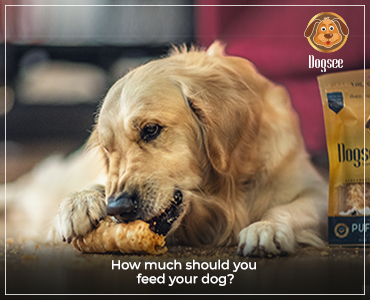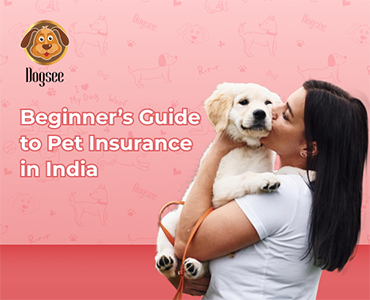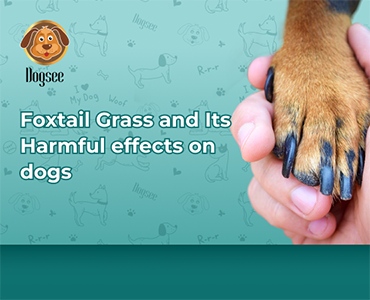
Better safe than sorry—that's our motto when it comes to dog aggression and jealousy.
Our furry companions bring joy and companionship to our lives, but sometimes they might display behaviours like jealousy and aggression that can be concerning.
Understanding these behaviours and finding effective ways to manage them is essential for a harmonious relationship with our pets.
Jealousy and aggression in dogs can manifest in various forms, from guarding possessions to displaying aggressive behaviour towards other pets or humans.
Recognizing and addressing these behaviours early on can prevent potential dog jealousy issues and ensure a safe environment for both your dog and those around them.
Signs of Jealousy and Aggression in Dogs

Identifying signs of jealousy and aggression is pivotal to managing a dog in a public scenario. Dogs might exhibit jealousy by showing possessiveness over food, toys, or attention from you. Aggression can be displayed through:
Growling
Snapping
Bitting
Resource guarding
Raised fur
Stiffness in posture
Intense staring
If you identify any of these behaviours in your doggo, it may be a sign of jealousy or guardedness.
Observing and understanding your dog’s body language and behavioural cues is crucial. Identifying these signs early can help prevent situations from escalating.
Techniques and Strategies to Address Jealousy and Aggression

Is your dog experiencing jealousy and acting aggressively in ways you can’t handle? Here are a few techniques to help train your jealous puppy.
Whether it’s a hard bar for dogs, or how to stop jealousy in dogs, we’ve got you covered with some valuable tips and techniques.
1. Establish Leadership Through Training
Establishing yourself as a leader is crucial to training a jealous dog. Consistent training sessions where you speak in a firm, serious, and authoritative manner, without shouting, can help establish leadership. This will make your dog more likely to listen and obey your commands, reducing jealousy-driven behaviours.
2. Introduce a Reward
Another effective technique is to add a distraction - a reward for good behaviour. You can use delicious and natural treats by Dogsee for this method. Introduce your dog to one of many delicious Himalayan treats or natural freeze-dried treats.

Our organic Dogsee Crunch apple is high in vitamins and minerals. Crush Apple is a one-ingredient product with no preservatives. These healthful, bite-sized treats are great for making training sessions more pleasurable for your dog.
The following are some of the advantages of this treatment:
Maintains the health and lustre of your dog’s skin and coat.
Vitamins C improve immunity.
Our all-natural Dogsee Crunch Banana is high in vitamins and minerals. Crunch Banana is a one-ingredient product that has no preservatives. They are healthful, bite-sized and great for training sessions that need to be more fun!
The banana crunch treat has the following benefits:
The vitamin B6 in these helps your dog grow strong
Improves muscle development
Has various minerals along with potassium, proteins, and hormones.
3. Incorporate the Source of Jealousy in Training
If your dog’s jealousy is targeted at a specific person or object, incorporating them into the training process can be beneficial. This might involve taking your dog on walks with the person they’re jealous of or having that person give them delicious Dogsee treats.
4. Improve Relationship Between Pets

If your dog is jealous of a new pet, focus on improving their relationship. Taking both pets on walks together, giving them treats, and spending quality time with them can help bond and reduce jealousy.
A great way to improve your relationship with your little buddy is by sharing some yummy dogsee cookies!
The goodness of pumpkin and cinnamon mix in Dogsee's Gigabytes Pumpkin and Cinnamon cookies, making it a pleasant and nutritious addition to your dog's diet.
These Cookies are a tasty way to meet your dog's nutritional needs. A pumpkin and cinnamon blend is used to make these nutritious dog treats.
These are high in nutrients such vitamins A, B1, B6, and C, which are beneficial to heart health. These cookies include a lot of antioxidants and anti-inflammatory substances, which help to improve your dog's digestive health and promote healthy ageing.
Also Read: Training a New Pet? Here are 5 steps you must know!
5. Control Aggression

If jealousy escalates into aggression, it’s crucial to address it promptly. Rewarding calm behaviour, obedience training, and removing triggers can help control the aggression.
However, it’s essential to seek professional help for severe aggression issues.
If your dog has pent up aggression and energy the best way to help them let go of it is by giving them our favourite buddy - Yakatoy!

What better way to remember the Himalayas than with a Yak? Yakatoy is a robust, snug and cuddle-worthy toy from our Dogsee Play Collection for canines who want to snuggle up and sleep with a companion.
It comes with a Cheesy Hard Bar from the Himalayas, which is a great chewy treat for your dog. It not only keeps your dog entertained for hours, but it also improves their oral health. Other things they help with are:
Stress Reduction: Playing with and chewing on this toy will help your dog relax and relieve stress.
Suitable for Cuddling: Its soft body and soft filling make it an ideal toy for extended snuggles.
Aids In The Removal of Plaque And Tartar: The sturdy bar is made of the highest quality materials.
6. Foster a Relationship with a Child
If your dog is jealous of your new baby or toddler, encourage them with positive interactions between them. This can help your dog adjust to the new family member and reduce jealousy over time.
Keep up with news on Dogsees' yummy treats by following us on Instagram and Facebook.
7. Self-care for You and Your Dog

Finally, remember to take care of yourself while training your dog. Addressing jealousy in dogs can be challenging, so it’s essential to prioritise your well-being to provide the best care for your doggo.
By incorporating these techniques and tips into your training routine, you can effectively manage and reduce jealousy in your dog, creating a happier and healthier environment for both you and your furry friend.
Addressing jealousy and aggression in dogs requires patience, consistency and effective training methods. Positive reinforcement training is highly effective in rewarding desirable behaviour in dogs.
Professional dog trainers or behavioural trainers can provide tailored strategies and guidance. They assess your dog’s behaviour and create custom plans to address specific issues, ensuring a safe and positive learning experience for both you and your doggo.
Conclusion

Understanding and managing jealousy and aggression in dogs is crucial for their well-being and the safety of everyone involved.
Consistent training, positive reinforcement and creating a structured environment can significantly improve these behaviours.
Patience and understanding are key as every dog is unique, and progress might take time.
Remember, seeking professional help when dealing with severe cases or if you’re unsure about how to handle these behaviours is always advisable.
With dedication and the right approach, you can help your furry companion overcome these challenges, fostering a healthy and loving relationship.
Frequently Asked Questions (FAQs):
1. How can I keep my dog from being aggressive?
Answer: Aggression prevention in dogs entails:
Providing correct socialisation and training to make your dog feel at ease in a variety of settings.
Avoiding conditions that may provoke hostility, such as overcrowding or combative encounters with other dogs or humans.
If you observe signs of aggression in your dog, seek professional advice from a veterinarian or dog behaviourist to treat any underlying concerns.
2. What are the signs of dog jealousy?
Answer: Jealousy in dogs can present itself in a variety of ways, including:
When the owner interacts with other pets or people, the owner exhibits attention-seeking behaviour.
Food, toys, or the owner's attention must be protected.
When the owner is there, aggression towards other pets or people occurs.
When the owner is paying attention to someone else, vocalisation or disruptive behaviour may occur.
3. How to Handle Jealousy and Aggression in Dogs?
Find causes: Pay attention to your dog's behaviour to find particular causes for jealousy or hostility, such as interactions with other pets, strangers, or environmental changes.
Positive Reinforcement: Using positive reinforcement techniques, you can progressively desensitise your dog to their triggers by rewarding calm and non-aggressive behaviour.
Set clear boundaries and expectations for your dog's behaviour and be consistent in your training and control of jealousy and hostility.
Exercise and Mental Stimulation: Make sure your dog gets enough exercise and mental stimulation to avoid boredom and tension, which can lead to jealousy and aggression.
 HELPFUL1 people found it helpful
HELPFUL1 people found it helpful
Related Blogs
Subscribe to Our Blogs
and never miss on the latest update!





















